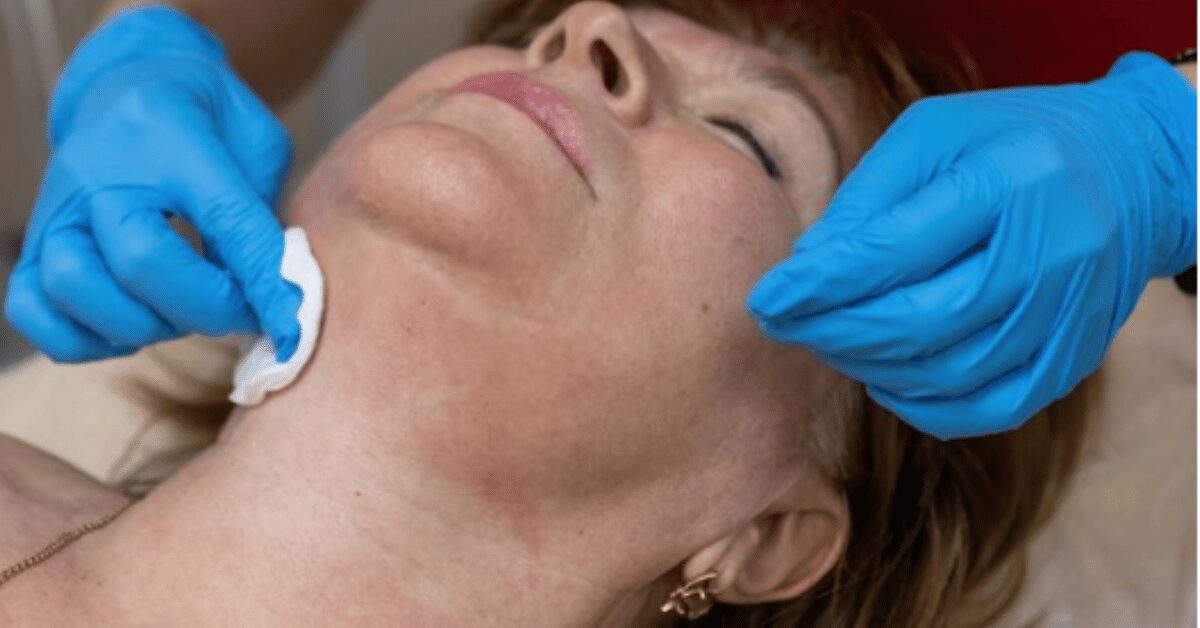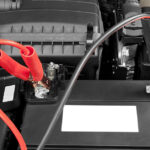Milia removal has become a frequently searched concern for people who struggle with small, white bumps appearing on the skin, most commonly around the eyes, cheeks, or nose. Within the first glance, these pearl-like cysts can resemble acne or clogged pores, but unlike pimples, they do not respond to typical acne treatments. For anyone wondering how to remove milia safely and effectively, it is important to first understand what causes them, why they occur, and what professional or at-home solutions are available. Milia are formed when keratin, a protein found in skin, becomes trapped under the surface. This makes them firm, dome-shaped, and difficult to extract without proper methods. Unlike temporary breakouts, milia tend to persist for weeks or even months unless addressed through professional care or targeted skincare routines.
In this comprehensive article, we will explore everything from the root causes of milia to the safest and most advanced methods for milia removal. You will learn about in-office treatments dermatologists use, safe at-home remedies, prevention strategies, and myths that need to be debunked. The article also highlights practical steps to improve skin care and minimize recurrence. As dermatologists often emphasize, “The skin remembers every choice you make,” and with the right knowledge, you can achieve healthier skin while avoiding unnecessary damage.
What Are Milia and Why Do They Form?
Milia are small, white or yellowish cysts typically measuring one to two millimeters in diameter. They form when dead skin cells, primarily keratin, become trapped beneath the skin’s outer layer. Unlike acne, they are not linked to bacteria or oil overproduction, which explains why traditional acne treatments rarely affect them. The most common type, known as primary milia, appears in both children and adults without an underlying condition. Secondary milia can arise after skin injury, burns, or use of heavy skincare products.
Interestingly, dermatologists observe that milia can occur in people of all ages and skin types. Infants often develop neonatal milia, which usually resolve naturally within weeks. In adults, however, these cysts may persist and even spread if untreated. Triggers such as sun damage, genetic predisposition, and prolonged use of thick creams are common contributors. Because they are painless and benign, many ignore them until cosmetic concerns arise. The persistence of these bumps has led to a rising interest in safe and effective milia removal methods.
Professional Milia Removal Treatments
For individuals seeking quick and safe results, professional removal performed by a dermatologist or licensed aesthetician remains the most reliable approach. Dermatologists often use sterilized tools and precise techniques to extract the keratin-filled cysts without damaging surrounding tissue. One common method is a sterile needle extraction, where the skin is gently punctured and the contents are carefully removed. Electrocautery and cryotherapy are other options, using heat or extreme cold to eliminate milia.
Laser treatments are gaining popularity, particularly for stubborn or widespread cases. Fractional CO₂ lasers, for instance, target cysts without harming nearby skin. While these methods are highly effective, they also come with costs, which may range significantly depending on region and clinic. Patients are advised to avoid DIY extraction, as improper attempts often lead to scarring, infection, or worsening of the condition. As one dermatologist noted, “Safe extraction is more about precision than force.” Professional treatments ensure sterility and minimize long-term complications.
At-Home Approaches for Managing Milia
Not everyone is ready to visit a clinic for professional removal, which is why at-home care is often explored. Over-the-counter exfoliating agents such as retinol creams, glycolic acid, or salicylic acid can help encourage skin cell turnover and gradually reduce milia formation. Consistency is key, as visible results may take several weeks. Gentle exfoliation with mild scrubs or chemical exfoliants also aids in preventing keratin buildup.
Another effective at-home strategy is incorporating lightweight moisturizers and non-comedogenic sunscreens to avoid pore-clogging. Steam treatments, which help open up pores, are sometimes suggested, although they do not directly remove milia. Importantly, squeezing or picking at milia should always be avoided, as the cysts are too deep to extract safely without professional tools. With patience and careful skincare, many individuals notice gradual improvement, particularly when combining exfoliating treatments with preventive measures.
Prevention: How to Keep Milia from Coming Back
While removal addresses current cysts, prevention is equally critical. Maintaining a consistent skincare routine with regular exfoliation helps reduce dead skin buildup. Lightweight, oil-free moisturizers are recommended, especially for individuals prone to milia around delicate areas such as the eyelids. Using broad-spectrum sunscreen also prevents sun damage, which is a known contributor to milia development.
Dietary choices and hydration play indirect but supportive roles in skin health. Ensuring sufficient intake of vitamins A, C, and E can help maintain skin resilience. Avoiding heavy makeup and cleansing thoroughly before bed reduces keratin entrapment. Finally, individuals with a history of frequent milia should schedule periodic dermatological checkups. Prevention strategies are not about avoiding every bump but rather minimizing recurrence and ensuring skin remains as healthy as possible over time.
Table 1: Comparison of Professional and At-Home Milia Removal
| Method | Effectiveness | Risk Level | Cost Range | Time for Results |
|---|---|---|---|---|
| Professional Extraction | High | Low | Moderate to High | Immediate |
| Laser Treatment | Very High | Low | High | Immediate |
| Retinol Creams | Moderate | Low | Low to Moderate | Weeks |
| Chemical Exfoliants | Moderate | Low | Low to Moderate | Weeks |
| DIY Extraction | Low | High | Minimal | Risky/Not Advised |
The Myths About Milia Removal
Many misconceptions surround milia, often leading to frustration or ineffective remedies. A common myth is that milia are caused by poor hygiene. In reality, milia are unrelated to cleanliness and often stem from natural skin processes. Another misconception is that oily skin types are more prone to milia; in truth, these cysts can occur in dry or sensitive skin as well. Some believe toothpaste, home remedies, or vigorous scrubbing can eliminate milia, yet these often irritate the skin instead of providing relief.
It is also wrongly assumed that milia always require removal. In some cases, particularly in infants, they resolve naturally without intervention. Recognizing these myths helps people focus on safe, evidence-based solutions rather than ineffective shortcuts. The takeaway is clear: patience, professional guidance, and targeted skincare are far more effective than harsh or unproven methods.
Table 2: Preventive Skincare Tips for Milia-Prone Skin
| Preventive Step | Recommended Frequency | Benefit |
|---|---|---|
| Gentle Exfoliation | 2–3 times weekly | Removes dead skin, prevents keratin buildup |
| Use of Lightweight Moisturizer | Daily | Hydrates without clogging pores |
| Broad-Spectrum Sunscreen | Daily | Prevents UV-related skin thickening |
| Retinol Application | 2–3 times weekly | Enhances skin turnover |
| Proper Cleansing Before Bed | Daily | Reduces cosmetic buildup |
When to See a Dermatologist
While at-home methods may work for mild cases, persistent or recurring milia often require professional evaluation. If cysts spread, become inflamed, or appear in sensitive areas such as eyelids, medical intervention is strongly advised. Dermatologists can also rule out underlying skin conditions that mimic milia. Patients should consider professional care not only for cosmetic concerns but also for long-term skin health. As one dermatologist aptly put it, “Sometimes what appears minor on the surface reflects deeper patterns within the skin.” Early consultation can help prevent complications and ensure effective treatment strategies tailored to individual needs.
Conclusion
Milia removal is less about a quick fix and more about understanding the balance between professional care and consistent skincare practices. These small but stubborn cysts are harmless, yet their persistence can impact self-confidence. The key lies in recognizing safe methods, debunking myths, and prioritizing prevention. Professional extraction, laser treatments, and dermatologist-approved skincare offer effective solutions, while at-home exfoliation and preventive habits help manage future risks. Ultimately, clearer skin is not just about appearance but about maintaining healthy routines that benefit the skin’s natural renewal process. As the saying goes, “Healthy skin is a reflection of overall wellness.”
FAQs
Q1: Can milia go away on their own without treatment?
Yes, especially in infants, milia often resolve naturally within weeks. In adults, however, they usually persist and may require intervention.
Q2: Is it safe to remove milia at home using needles?
No, self-extraction is not advised. It increases risks of infection, scarring, and skin damage. Professional removal is safest.
Q3: Which skincare ingredients help prevent milia formation?
Ingredients like retinol, glycolic acid, and salicylic acid support skin turnover and reduce keratin buildup, lowering recurrence chances.
Q4: Can sunscreen use contribute to milia?
Yes, heavy or comedogenic sunscreens may contribute. Switching to oil-free, lightweight, broad-spectrum options reduces risks of milia.
Q5: How long does professional milia removal take?
Most in-office procedures are quick, often under 30 minutes, with immediate cosmetic improvement and minimal downtime.











